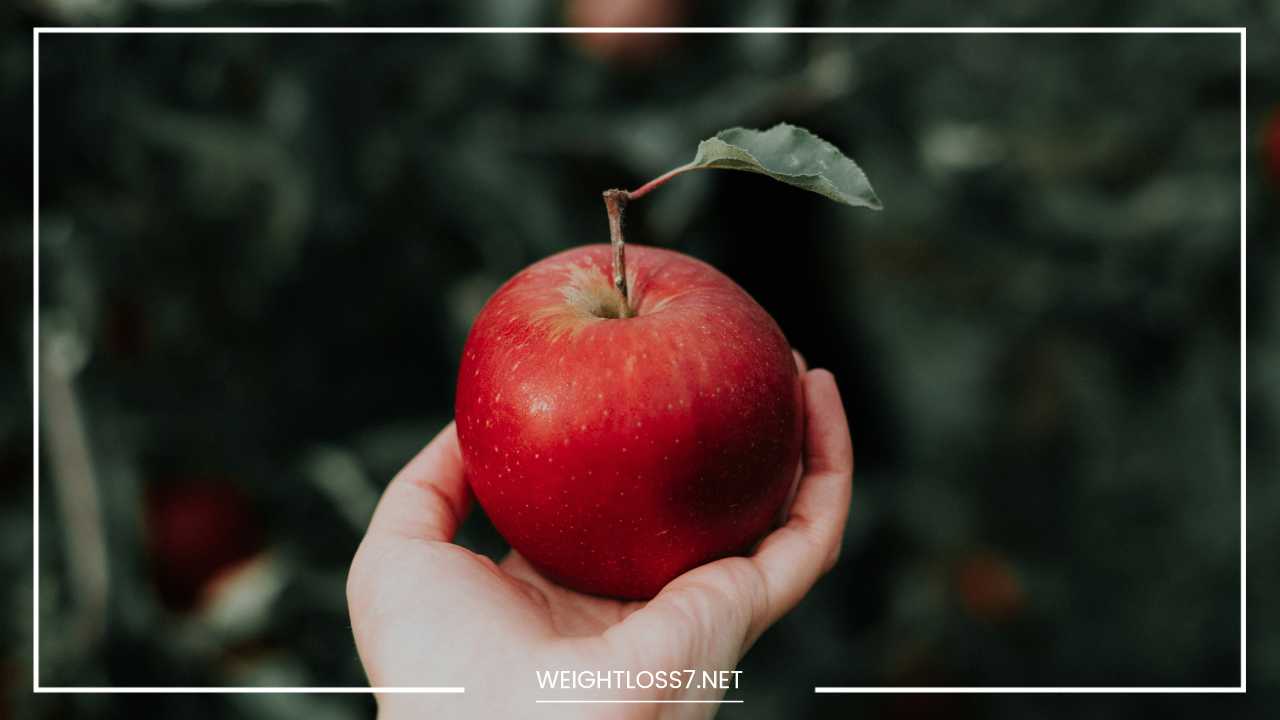An Apple a Day Isn’t Enough

An Apple a Day
An Apple a Day: Building a Balanced Plate for Optimal Health
The proverb “An apple a day keeps the doctor away” has held a special place in our collective health consciousness for generations.
It’s a simple, catchy phrase that evokes an image of effortless health – pop a crisp apple daily, and voila, no doctor visits! However, like many simplified proverbs, it doesn’t paint the whole picture.
While apples are a fantastic source of vitamins and fiber, relying solely on them for optimal health is a recipe for nutritional deficiencies.
This blog post dives deeper into why a balanced plate is the cornerstone of well-being and explores strategies to achieve it, going beyond just fruits and vegetables.
We’ll delve into the science behind nutrient synergy, explore the challenges of creating a balanced diet in the modern world, and offer practical solutions to cultivate a healthy relationship with food.
The Symphony of Nutrients: Understanding Synergy
Our bodies are intricate biological machines with complex nutritional needs. Each food group plays a specific role in this intricate symphony. Simply put, some nutrients work best when they’re present alongside others.
For example, vitamin A requires healthy fats for optimal absorption, while iron from plant-based sources utilizes vitamin C for better utilization.
A balanced diet ensures a well-rounded intake of all these nutrients, allowing them to work together for optimal function.
Beyond Fruits and Vegetables: A Tour of the Food Groups
Fruits and vegetables are crucial for a healthy diet, overflowing with vitamins, minerals, fiber, and antioxidants. However, they shouldn’t be the only focus. Let’s explore the essential food groups and their unique contributions:
-
Fruits and Vegetables: The vibrant world of fruits and vegetables offers a spectrum of essential nutrients. Aim for a colorful mix, as each color represents a unique set of antioxidants and phytonutrients. Deep orange sweet potatoes are rich in beta-carotene, leafy greens are packed with vitamins K and A, and red berries boast high levels of anthocyanins.
-
Whole Grains: Whole grains, unlike their refined counterparts, retain their bran and germ, the powerhouses of fiber, B vitamins, and minerals. Whole grains provide sustained energy throughout the day, keeping you feeling fuller for longer. Opt for brown rice, quinoa, oats, and whole-wheat bread over white bread and pasta.
-
Lean Protein: Our bodies are constantly building and repairing tissues. Protein serves as the building block for this process. Lean sources like chicken, fish, beans, lentils, tofu, and low-fat dairy products are excellent choices. Plant-based protein sources like beans and lentils combine well with whole grains to create complete protein sources containing all essential amino acids.
-
Healthy Fats: Don’t fear fat! Healthy fats like those found in avocados, nuts, seeds, and olive oil are crucial for cell health, hormone regulation, brain function, and satiety. These fats contribute to a healthy heart, improve cognitive function, and aid in nutrient absorption.
Building Your Balanced Plate: Practical Strategies for Everyday Life
Now that we understand the importance of each food group, let’s translate this knowledge into practical steps:
-
Portion Perfection: Visualize your plate as a canvas for a balanced masterpiece. Fill half with non-starchy vegetables like broccoli, leafy greens, and bell peppers. Allocate a quarter of the plate for lean protein, and the remaining quarter for whole grains. Adjust portion sizes based on your individual calorie needs and activity level.
-
The Rainbow Plate Challenge: Make it a fun activity! Challenge yourself to include at least three different colored fruits or vegetables in each meal. This ensures a wider range of nutrient intake.
-
Become a Label Decoder: Don’t be fooled by marketing tactics. Learn to read food labels critically. Pay attention to serving sizes, sugar content, and sodium levels. Opt for products with whole ingredients and minimal processing.
-
Planning is Power: Spontaneous meals often lead to unhealthy choices, especially when on-the-go. Plan your meals and snacks for the week in advance. This allows you to prepare healthy options beforehand and avoid the temptation of grabbing fast food.
-
Embrace Culinary Adventure: Stepping outside your comfort zone in the kitchen can be fun and rewarding. Explore new recipes and cuisines! This exposes you to a broader range of flavors and nutrients, keeping your diet exciting and preventing boredom.
Beyond the Plate: Cultivating a Holistic Approach to Health
While a balanced diet forms the foundation of well-being, it’s not the only factor. Here are some additional lifestyle habits that enhance your overall health:
-
Hydration is Key: Water is the elixir of life. It’s essential for countless bodily functions, from regulating body temperature to flushing out toxins. Aim for eight glasses of water daily, adjusting based on your activity level and climate.
-
Move Your Body: Regular physical activity is crucial for maintaining a healthy weight, managing stress, boosting energy levels, and improving overall well-being. Aim for at least 30 minutes of moderate-intensity exercise most days of the week. Brisk walking, swimming, cycling, and dancing are all excellent options.
-
Prioritize Sleep: When we sleep, our bodies repair and recharge. Adequate sleep is essential for cognitive function, mood regulation, and immune system health. Aim for 7-8 hours of quality sleep each night. Create a relaxing bedtime routine to ensure restful sleep.
-
Stress Management Matters: Chronic stress can wreak havoc on our physical and mental health. It can lead to weight gain, weakened immunity, and even increase the risk of chronic diseases. Practice relaxation techniques like meditation, deep breathing exercises, or yoga to manage stress levels effectively.
Challenges and Solutions: Building a Balanced Plate in a Busy World
Building a balanced plate can be challenging, especially with busy schedules and a world full of tempting processed foods. But don’t be discouraged! Here are some solutions to help you navigate these challenges:
-
The Power of Meal Prep: Dedicate some time on weekends or free evenings to prepare healthy meals and snacks for the week. This saves time during the week and ensures you have healthy options readily available when hunger strikes. Pre-chop vegetables, cook a large pot of lentil soup, or marinate chicken breasts for quick and easy meals.
-
Healthy Convenience Options: Many grocery stores offer pre-cut vegetables, pre-cooked protein sources like grilled chicken strips or salmon fillets, and pre-washed salad mixes. Utilize these options to save time without sacrificing nutrition.
-
Cook in Bulk: Cooking a large pot of chili or minestrone soup on the weekend provides you with healthy and flavorful meals throughout the week. Leftovers can be repurposed into new dishes, reducing food waste and adding variety to your diet.
-
Leftover Magic: Leftovers don’t have to be boring! Repurpose them into creative new dishes. Leftover chicken can be transformed into a salad with chopped vegetables, or shredded and used in quesadillas. Leftover roasted vegetables can be added to omelets or pasta dishes.
-
Healthy Swaps: Craving something sweet? Instead of reaching for sugary cookies or pastries, opt for a piece of fruit with a dollop of nut butter or a handful of nuts and dried fruit for a satisfying and nutritious snack.
Building a Sustainable Relationship with Food
A balanced diet isn’t just about following a strict set of rules; it’s about cultivating a healthy and sustainable relationship with food. Here are some tips:
-
Mindful Eating: Pay attention to hunger and fullness cues. Eat slowly and savor your food, allowing your body time to register satiety signals. Avoid distractions like television or phones while eating.
-
Enjoyment Matters: Food should be a source of pleasure and nourishment, not guilt or deprivation. Don’t demonize entire food groups. Allow yourself occasional treats in moderation, while focusing on healthy choices most of the time.
-
Celebrate Progress, Not Perfection: Building a balanced diet takes time and effort. Don’t get discouraged by setbacks. Celebrate your progress, no matter how small, and focus on making gradual, sustainable changes.
A Symphony of Delicious Choices
The proverb “An apple a day” might be a catchy reminder, but true well-being comes from a balanced and varied diet, combined with a healthy lifestyle.
By incorporating a variety of food groups, practicing portion control, embracing healthy cooking practices, and prioritizing overall well-being, you can fuel your body for optimal health and vibrant living.
Remember, a balanced approach is key. Enjoy the apple, explore the rainbow on your plate, and create a symphony of delicious and nutritious choices that nourish your body and soul.
Beyond the Basics: Tailoring Your Balanced Plate
While the core principles of a balanced plate apply to everyone, individual needs can vary. Here’s how to personalize your approach:
-
Dietary Considerations: Certain individuals may have specific dietary needs due to allergies, intolerances, or medical conditions. If you fall into this category, consult a registered dietitian or healthcare professional to create a personalized balanced plate that caters to your specific needs. They can help you navigate food restrictions and ensure you’re getting all the essential nutrients.
-
Age Matters: Nutritional needs evolve throughout life. Children require a focus on building bones and brains, while adults may prioritize heart health and energy levels. Seniors may need to adjust their diet for concerns like bone density and digestion. Research age-specific dietary recommendations or consult a healthcare professional for guidance.
-
Activity Level: The more active you are, the higher your calorie needs. Athletes and individuals with physically demanding jobs require additional fuel to support their energy expenditure. Adjust your portion sizes accordingly, focusing on complex carbohydrates for sustained energy.
-
Cultural Cuisines: Embrace the culinary world! Traditional cuisines from various cultures often incorporate balanced elements naturally. Explore recipes from different regions and adapt them to your preferences. You might discover delicious and nutritious ways to incorporate new food groups into your diet.
Building a Balanced Plate on a Budget
Eating healthy doesn’t have to be expensive. Here are some tips for creating a balanced plate on a budget:
-
Shop in Season: Seasonal produce is typically more affordable and fresher. Explore farmers’ markets for locally grown fruits and vegetables at competitive prices.
-
Embrace Frozen: Frozen fruits and vegetables are flash-frozen at peak ripeness, locking in nutrients. They’re often more affordable than fresh options and can be just as versatile in cooking.
-
The Power of Beans and Lentils: These plant-based protein powerhouses are budget-friendly and incredibly versatile. They can be incorporated into soups, stews, salads, and even transformed into delicious veggie burgers.
-
Cook at Home: Eating out frequently can be expensive and often leads to less control over ingredients and portion sizes. Cooking at home allows you to control the quality of ingredients and portion sizes, saving money in the long run.
-
Plan Your Grocery Trips: Impulse purchases are a budget buster. Create a grocery list based on your meal plan and stick to it. Avoid shopping when hungry, as this can lead to unnecessary purchases.
The Takeaway: A Balanced Plate for a Vibrant Life
Building a balanced plate is a journey, not a destination. It’s about creating a sustainable and enjoyable relationship with food that nourishes your body and fuels your well-being.
By incorporating the principles outlined in this post, tailoring your approach to your individual needs, and embracing a holistic lifestyle, you can cultivate a healthy and vibrant life.
Remember, it’s not about perfection, but about making gradual, positive changes towards a healthier you. So, explore the rainbow on your plate, experiment with new flavors, and enjoy the delicious journey towards a balanced and fulfilling life.

















